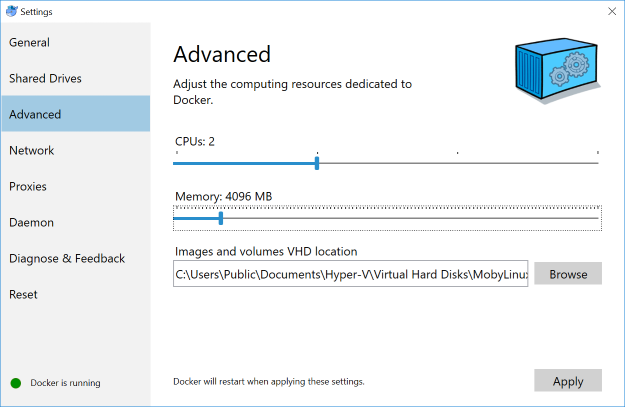ARCHIVED
This project is no longer maintained. For alternative getting started experiences, you may want to try one of these options:
- Start a free trial on Elastic Cloud, our hosted service.
- Read our Running the Elastic Stack on Docker guide.
- Take a look at our Helm charts for launching the stack via Kubernetes.
stack-docker
This example Docker Compose configuration demonstrates many components of the Elastic Stack, all running on a single machine under Docker.
Prerequisites
- Docker and Docker Compose.
-
Windows and Mac users get Compose installed automatically with Docker for Windows/Mac.
-
Linux users can read the install instructions or can install via pip:
-
pip install docker-compose
-
Windows Users must set the following 2 ENV vars:
COMPOSE_CONVERT_WINDOWS_PATHS=1PWD=/path/to/checkout/for/stack-docker- for example I use the path:
/c/Users/nick/elastic/stack-docker - Note: you're paths must be in the form of
/c/path/to/placeusingC:\path\to\placewill not work
- for example I use the path:
- You can set these two ways:
- Temporarily add an env var in powershell use:
$Env:COMPOSE_CONVERT_WINDOWS_PATHS=1 - Permanently add an env var in powershell use:
[Environment]::SetEnvironmentVariable("COMPOSE_CONVERT_WINDOWS_PATHS", "1", "Machine")
Note: you will need to refresh or create a new powershell for this env var to take effect
- in System Properties add the environment variables.
- Temporarily add an env var in powershell use:
-
At least 4GiB of RAM for the containers. Windows and Mac users must configure their Docker virtual machine to have more than the default 2 GiB of RAM:
- Linux Users must set the following configuration as
root:
sysctl -w vm.max_map_count=262144
By default, the amount of Virtual Memory is not enough.
Starting the stack
First we need to:
- set default password
- create keystores to store passwords
- install dashboards, index patterns, etc.. for beats and apm
This is accomplished using the setup.yml file:
docker-compose -f setup.yml up
Please take note after the setup completes it will output the password
that is used for the elastic login.
Now we can launch the stack with docker-compose up -d to create a demonstration Elastic Stack with
Elasticsearch, Kibana, Logstash, Auditbeat, Metricbeat, Filebeat, Packetbeat,
and Heartbeat.
Point a browser at http://localhost:5601 to see the results.
NOTE: Elasticsearch is now setup with self-signed certs.
Log in with elastic and what ever your auto generated elastic password is from the
setup.
